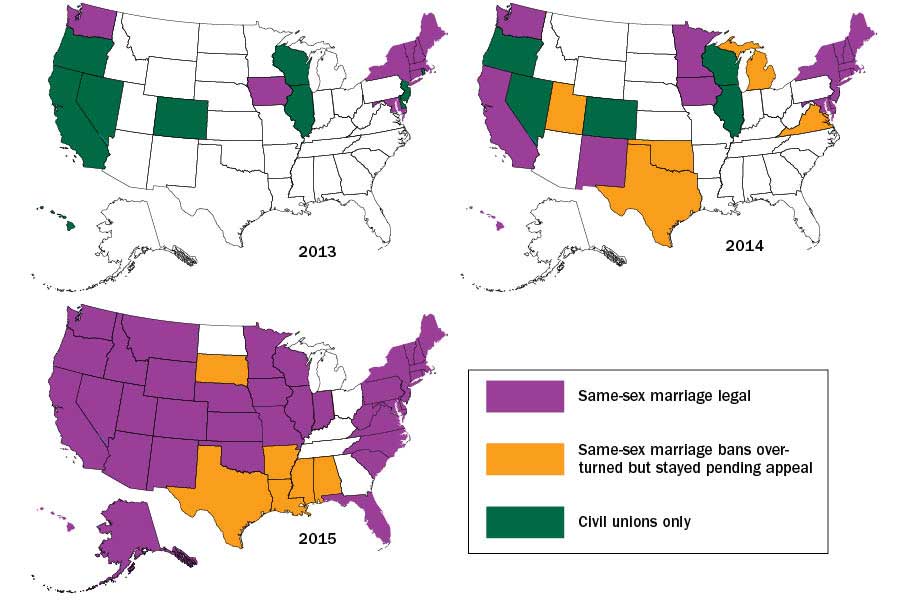This time one year ago, same-sex couples could marry in 16 states and Washington, D.C. That number has now grown to 37 states and the nation’s capital. More than 70 percent of Americans now live in a jurisdiction that sanctions same-sex marriage.
Twenty-one states opened their doors to same-sex marriage in one year and, with a landmark U.S. Supreme Court ruling expected this summer, the marriage-equality map will likely undergo some more major revisions this year.
Path to progress
The pace of the marriage-equality movement in 2014 picked up May 19 when a federal judge in Oregon overturned the state’s marriage ban. The next day, Pennsylvania followed suit.
A law that allowed same-sex marriage in Illinois went into effect June 1. By the end of the summer, federal or state court decisions were handed down in six more states, all of which went into effect in October, shortly after SCOTUS declined to hear appeals from a number of states. That decision prompted another wave of progress, with seven more states legalizing same-sex marriage within two weeks of the top court’s Oct. 6 decision. In the last few months, several more have joined the ranks, the most recent being Nebraska; unless the decision is stayed, marriages are set to begin March 9. But, the Alabama Supreme Court turned black the clock on equality by halting marriages in that state.
Where to now?
While the Supreme Court declined to take up cases from the Fourth, Seventh and 10th Circuits, it did take four cases out of the Sixth Circuit Court of Appeals.
The court will finally address the penultimate question of whether same-sex couples have a fundamental right to marriage under the U.S. Constitution. The justices will also consider whether states have to recognize legal out-of-state marriages.
The four cases, consolidated under DeBoer v. Snyder, come from Michigan, Kentucky, Ohio and Tennessee. While there had been widespread agreement among both federal and state courts in recent years over the unconstitutionality of state bans on same-sex marriage, the Sixth Circuit found such bans to be constitutional, seemingly prompting the top court’s willingness to review.
Oral arguments will take place this spring, and the justices will issue their ruling before the end of June. If the court decides that the Constitution’s Equal Protection clause guarantees a right to marriage for all, the door to same-sex marriage will be opened across the country.

